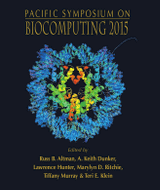
Chirag J. Patel1, Arjun K. Manrai1,2
1Center for Biomedical Informatics, Harvard Medical School
2Harvard-MIT Division of Health Sciences and Technology
Email: chirag_patel@hms.harvard.edu, manrai@post.harvard.edu
Pacific Symposium on Biocomputing 20:231-242(2015)
The environment plays a major role in influencing diseases and health. The phenomenon of environmental exposure is complex and humans are not exposed to one or a handful factors but potentially hundreds factors throughout their lives. The exposome, the totality of exposures encountered from birth, is hypothesized to consist of multiple inter-dependencies, or correlations, between individual exposures. These correlations may reflect how individuals are exposed. Currently, we lack methods to comprehensively identify robust and replicated correlations between environmental exposures of the exposome. Further, we have not mapped how exposures associated with disease identified by environment-wide association studies (EWAS) are correlated with other exposures. To this end, we implement methods to describe a first “exposome globe”, a comprehensive display of replicated correlations between individual exposures of the exposome. First, we describe overall characteristics of the dense correlations between exposures, showing that we are able to replicate 2,656 correlations between individual exposures of 81,937 total considered (3%). We document the correlation within and between broad a priori defined categories of exposures (e.g., pollutants and nutrient exposures). We also demonstrate utility of the exposome globe to contextualize exposures found through two EWASs in type 2 diabetes and all-cause mortality, such as exposure clusters putatively related to smoking behaviors and persistent pollutant exposure. The exposome globe construct is a useful tool for the display and communication of the complex relationships between exposure factors and between exposure factors related to disease status.